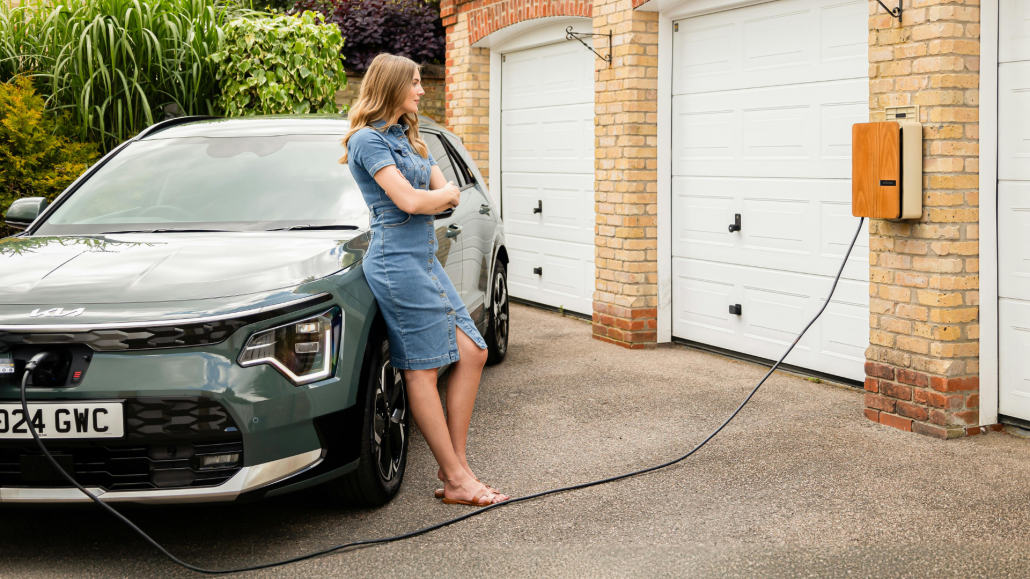It’s an EV Summer
Federal incentives are ending soon — here’s what you need to know before you buy.
by Drew Arends

For electric vehicle (EV) owners and prospective buyers, it’s a confusing time.
Less than three years ago, transformative federal tax credits were passed for EVs under the Infrastructure and Investments Jobs Act (IIJA) and Inflation Reduction Act (IRA). Electrification of transportation systems seemed to be inevitable, with exciting developments in heavy-duty vehicles and much-needed support for EV charging nationwide. Like gas stations, consistent and readily available charging stations are necessary for reliable EV travel.
Unfortunately, for those of us counting on the provisions within IIJA and IRA, the recently passed One Big Beautiful Bill Act includes major repeals of provisions in the IIJA and IRA, notably projects and funding dedicated to climate action. Of course, this encompasses EVs.
In today’s age of information overload, it can be difficult to parse through the avalanche of details. And yet, we must stay informed. This is especially true for those of us committed to alternative fuel vehicles like EVs. So, what do we need to know?
Federal tax credits for new EVs, used EVs, commercial EVs and electric vehicle supply equipment (EVSE) are all impacted. Tax credits for EVs end Sept. 30, 2025, and tax credits for EVSE end June 30, 2026. As such, there is no time like the present to invest in EVs. Because even without federal incentives, EVs are here to stay.
EVs Today, Tomorrow and Beyond
Consider the following facts.
- EV sales in the past 10 years have grown from about 50,000 in 2015 to nearly 1.25 million in 2024.
- Every American automaker aims to release EVs this decade.
- Charging is attainable at home and at work, moving beyond the traditional “gas station” model. Public charging is expanding rapidly, with standardized equipment that fits every vehicle and more charging ports available at each charging location.
- One out of four vehicle sales in the world this year are expected to be EVs.
It’s clear that EVs are not going anywhere. Even if U.S. policy slows adoption, global momentum is accelerating, and the technology will keep advancing. Meanwhile, a private industry is already shifting to this change. In other words, if you ride out the storm in the U.S., EVs will come back in style—just like a 90s trend. If you act now, you can still take advantage of available federal incentives.
“Now is the time to buy an EV,” said Ingrid Malmgren, senior policy director of Plug in America, a nonprofit working to accelerate the shift to electric vehicles. “EV tax credits disappear at the end of the summer (Sept. 30). There are some fantastic deals to be had on new and used EVs.”
How to Buy an EV Before Sept. 30, 2025
There are three kinds of EVs that qualify for different tax credits, all of which expire at the end of September. New EVs (tax credit 30D) can be either $7,500 or $3,750 depending on the batteries and minerals used.
“To get the first $3,750 credit, a certain percentage of the car’s critical battery minerals must have been sourced from the U.S. or from any country that has a free-trade agreement with the U.S.,” according to Edmunds, an online resource for automotive inventory and information. “The other $3,750 credit requires that a certain percentage of battery components were manufactured or assembled in the same roster of countries.”
The buyer must also meet certain income requirements: up to $300k for joint filers, $225k for head of household, and $150k for single filers.
Used EVs (tax credit 25E) face different requirements and restrictions. Buyers can receive a tax credit of up to $4,000 or 30 percent of the vehicle’s sale price—whichever is less. To qualify, the vehicle must cost $25k or less, two years of age or older, and the buyer’s income must fall under $150k for joint filers, $112,500 for head of household, or $75k for single filers. A vehicle can only be claimed for either the new EV credit or the used EV credit—not both. That means if a car was already claimed under the new EV credit when it was first sold, it cannot later be claimed as a used EV. In addition, buyers can only claim the used EV credit once every three years, according to Edmunds.
Commercial EVs—both new and used—may qualify for tax credit 45W. This credit is available only for fleet vehicles purchased or leased by entities such as municipalities, businesses, non-profits and schools. Even tax-exempt organizations can participate. One key distinction: the credit, worth up to $7,500 per vehicle, is only available through a lease. Thus, if you are a business owner or decision-maker considering this option, make sure the manufacturer or dealer is passing the tax credit through as part of the lease agreement.
A Few More Things to Know Before You Buy
- Instant savings at the dealership: Any of the EV tax credits can be applied as a point-of-sale rebate, reducing your upfront cost or down payment. You don’t need tax liability, and this option can lower finance charges and monthly payments.
- Check your eligibility—and your dealer’s: Before visiting the dealership, confirm that you meet the income limits and that the vehicle you want qualifies under the price limit for the credit you’re seeking. Equally important, verify that the dealership is registered with IRS Energy Credits Online. You can do this by visiting PlugStar.com and using the “Find a Dealer” tool. If the dealership isn’t registered, you won’t be able to claim the tax credit.
- Get the seller report: When the dealer submits a seller report, ask for a copy of the successfully submitted report so you can file it with your taxes next year.
How to Install Residential EVSE before June 30, 2026
While the deadline for EV charging incentives (tax credit 30C) is not until next year, don’t let that be a sign to twiddle your thumbs. EVSE is more affordable and efficient than ever, and installing it before June 30, 2026, means you can claim the tax credit and see a faster return on your investment. Here’s what to know:
- The credit covers up to 30 percent of the cost or $1,000 –whichever is less—for each eligible piece of equipment.
- EVSE must be installed at your primary residence.
- You must claim the credit by filing it with your tax return.
- Installation costs are included in the credit.
If you’re considering buying an EV in the future, why not get ahead by obtaining the infrastructure needed to power it right in your own home?
More Resources
In case it wasn’t clear: the time to buy an EV and EVSE is now! It’s an EV summer with a limited window to electrify your transportation affordably.
If you have any questions, please reach out to anyone on Metropolitan Energy Center’s Sustainable Transportation team.
This article was informed by Plug in America, which offers a variety of helpful resources, including a brand-neutral EV shopping tool at PlugStar.com, an EV Shopper Checklist and a Dealer Map.
Additional resources can be found below.


